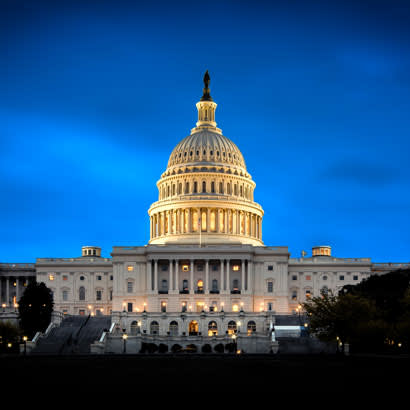
The White House released its FY19 budget request yesterday, kicking off debate for the next budget cycle. Although Congress passed a final budget agreement for FY18 merely days before, the release of the President’s budget in February is traditionally intended to set the tone for budget negotiations by Congress for the next fiscal year. Much like President Trump’s budget proposal last year, which was largely ignored by Congress (President proposes, Congress disposes as the saying goes), this budget request is assumed to be “dead on arrival.” Even so, we can’t help but feel skittish when reading the fine print, and a decent amount of déjà vu at the proposed cuts and eliminations we all worked so hard last year to oppose.
Department of Health & Human Services (HHS): Proposed $900 million cut from the Centers for Disease Control and Prevention (CDC), including $138 million from the Chronic Disease Division that houses the Arthritis Program. Further, the budget would create a block grant intended to provide states with flexibility to address chronic disease programs as they see fit. Such a proposal would almost certainly disadvantage smaller programs like the Arthritis Program, and could jeopardize the future of the program altogether.
Tell Congress to fund the CDC’s Arthritis Program at $16 million.
The proposal recommends $175 million in new funding as part of a broader allocation of $10 billion for HHS to fight the opioid crisis. The Drug-Free Communities (DFC) Support Program administered by the Substance Abuse and Mental Health Services Administration (SAMHSA) is identified as a top priority. NRPA is currently conducting a survey to better understand how park and recreation agencies are confronting substance abuse in their parks and the community. This increased funding could be an additional opportunity for park and recreation agencies to play a role in our nation’s opioid epidemic.
Department of Education: Proposed elimination of the 21st Century Community Learning Center (21st CCLC) Program, the only federal funding stream available to support out-of-school time programming. The current federal investment in afterschool programming is modest, but it is absolutely vital to families and communities across the country, supporting afterschool and summer learning for almost 2 million children.
Tell Congress to fund the 21st Century Community Learning Center Program at $1.3 billion.
Although 21st CCLC is designed to support STEM (science, technology, engineering, math) educational opportunities in afterschool programs, the Administration has separately proposed $200 million in grants for STEM programs, including adding $13 million to an existing career and technical education grant program to send $20 million in grants for CTE programs that emphasize STEM.
Department of Interior: Proposed elimination ofthe state assistance program of the Land and Water Conversation Fund. The Department of Interior argues that the Gulf of Mexico Energy Security Act funds can be used to supplant this cut. With a growing backlog of need and deferred maintenance at all levels of parks, NRPA opposes such cuts. For more information, read the “Land and Water Conservation Fund” fact sheet.
Department of Transportation: Proposed elimination of the Transportation Investment Generating Economic Recovery (TIGER) grant program which provides $500 million in grants every year to local transportation projects. Park and recreation agencies use TIGER funds to improve community infrastructure including pathways for alternative modes of transportation, such as bicycling and walking. For more information, read the “Infrastructure: The Role of Parks and Recreation” fact sheet.
Department of Housing and Urban Development: Proposed elimination of the Community Development Block Grant (CDBG) program. Park and recreation agencies have used these funds to provide parks, recreational opportunities and critical programming to low-income communities. Every $1.00 spent on CDBG is leveraged into $3.65 in private and local public funding. For more information, read the “Federal Investments in Local Parks and Recreation: Appropriation Requests” fact sheet.
What’s Next?
Fortunately, the advocacy of NRPA’s members nationwide opposing such proposals to cut or eliminate the above programs has proven successful, and these vital federal programs continue to benefit park and recreation agencies across the U.S. From now until March 23, appropriators will work to allocate the resources that were agreed to in last week’s budget deal to finalize the FY18 budget process, which include additional dollars for the non-defense domestic discretionary programs that you access. Your NRPA public policy team will remain focused on getting the above programs and more the funding they deserve for FY19, while working to educate the Administration on the value of these programs, so that in future budget deals NRPA members don’t have to feel so skittish come this time next year.
How Can You Help?
Make sure you’re signed up to be an NRPA Park Champion! Park Champions agree to work with their federal elected officials by showing them the impact of the federal programs they vote on — like CDBG, LWCF and 21st Century Community Learning Centers — in their communities. This show and tell model has proven to be incredibly effective. We’d love to add your name to the list of Park Champions!


